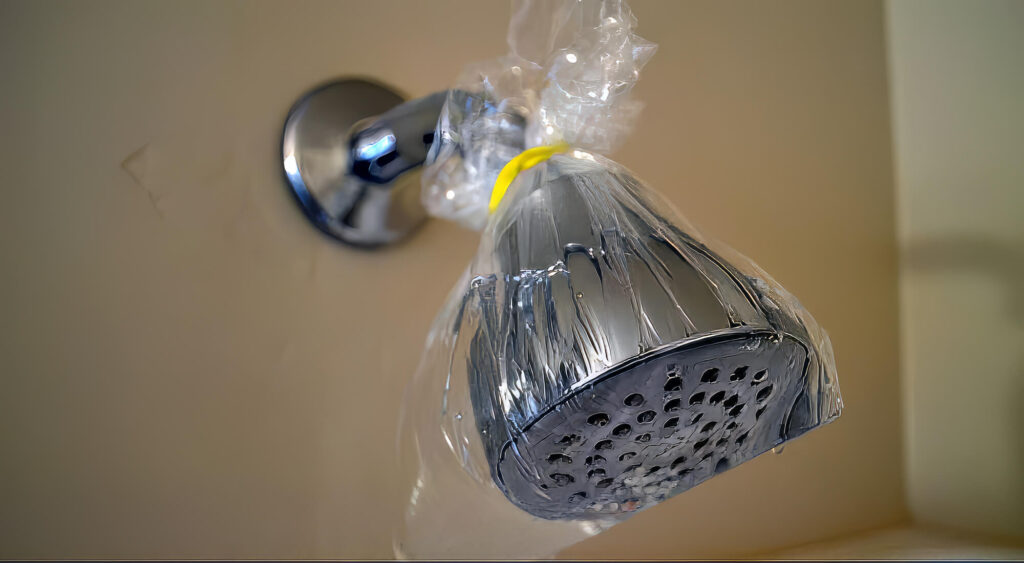Shower Head Revitalization: A Guide on Cleaning with Baking Soda
Introduction
Over time, shower heads can accumulate mineral deposits, bacteria, and grime, affecting water flow and the overall shower experience. Cleaning your shower head is a simple yet effective way to maintain optimal performance and hygiene. In this comprehensive guide, we’ll delve into the process of cleaning your shower head using a household staple – baking soda. Discover the step-by-step method, tips for effective cleaning, and answers to frequently asked questions.
Why Baking Soda?
Baking soda, or sodium bicarbonate, is a versatile and eco-friendly cleaning agent. Its mild abrasive properties make it ideal for scrubbing away buildup without causing damage. When combined with its deodorizing and antibacterial qualities, baking soda becomes a powerful yet gentle solution for cleaning various household surfaces, including your shower head.
Step-by-Step Guide: Cleaning Your Shower Head with Baking Soda
1. Gather Your Supplies
Before you begin, ensure you have the following supplies ready:
- Baking soda
- White vinegar
- Plastic bag or sandwich bag
- Rubber band or twist tie
- Old toothbrush or scrub brush
- Soft cloth or sponge
- Wrench or pliers (if your shower head is detachable)
2. Remove the Shower Head (if Detachable)
If your shower head is detachable, it’s recommended to remove it for a more thorough cleaning. Use a wrench or pliers to unscrew the shower head from the pipe. Be cautious not to damage the finish or connections.
3. Create a Baking Soda Paste
In a small bowl, mix baking soda with enough water to form a paste. Aim for a thick yet spreadable consistency. This paste will serve as your cleaning solution.
4. Apply the Baking Soda Paste
Apply the baking soda paste directly to the shower head, ensuring that all areas, including nozzles and crevices, are covered. The paste’s mild abrasiveness helps break down mineral deposits and grime.
5. Secure the Paste with a Plastic Bag
Place a plastic bag or sandwich bag over the shower head, ensuring the paste-covered areas are in direct contact with the bag. Use a rubber band or twist tie to secure the bag in place. The goal is to create a sealed environment for the baking soda paste to work its magic.
6. Let It Soak
Allow the shower head to soak in the baking soda paste for at least 30 minutes. This soaking period allows the paste to loosen and dissolve stubborn deposits.
7. Scrub Away Residue
After the soaking period, remove the bag and use an old toothbrush or scrub brush to gently scrub the shower head. Pay special attention to the nozzles and other intricate parts. The loosened residue should come off easily.
8. Rinse Thoroughly
If the shower head is detachable, rinse it thoroughly under running water. If it’s still attached, turn on the water to flush out any remaining baking soda residue. Ensure all traces of the paste are removed.
9. Dealing with Stubborn Deposits
For persistent deposits, create a mixture of equal parts white vinegar and water. Soak the shower head in this solution for an additional 15-20 minutes before scrubbing and rinsing.
10. Reattach the Shower Head (if Detachable)
If you detached the shower head, carefully reattach it to the pipe using a wrench or pliers. Ensure a snug fit without over-tightening.
Tips for Effective Cleaning
1. Regular Maintenance
Incorporate shower head cleaning into your regular cleaning routine to prevent significant buildup. Aim for cleaning every 1-3 months, depending on water hardness.
2. Use Distilled White Vinegar
If your shower head has stubborn mineral deposits, substitute water with distilled white vinegar in the baking soda paste. The acidity of vinegar enhances the cleaning process.
3. Protect the Finish
Avoid using abrasive tools or harsh chemicals that may damage the finish of your shower head. Baking soda provides effective cleaning without causing harm.
4. Inspect and Replace Seals
During cleaning, inspect rubber seals and gaskets. If they show signs of wear or damage, consider replacing them to prevent leaks.
Frequently Asked Questions:
Q1: Can I clean a non-detachable shower head with baking soda?
A1: Yes, you can. While the process is slightly different, you can create a baking soda paste, apply it directly to the shower head, and scrub with a brush. Rinse thoroughly after cleaning.
Q2: Does the type of baking soda matter?
A2: No, both regular baking soda and baking soda labeled as “washing soda” are effective for cleaning. Choose what is readily available.
Q3: Is it safe to use baking soda on a chrome shower head?
A3: Yes, baking soda is safe for chrome surfaces. It provides gentle cleaning without causing damage.
Q4: Can I clean a rain shower head with this method?
A4: Yes, the method is suitable for various types of shower heads, including rain shower heads. Ensure thorough coverage and use a brush suitable for the specific design.
Q5: How often should I clean my shower head with baking soda?
A5: Cleaning frequency depends on water hardness and usage. Generally, aim for cleaning every 1-3 months to prevent buildup.
Q6: What if I have a brass or gold-finished shower head?
A6: Baking soda is generally safe for brass and gold finishes. However, test a small, inconspicuous area first to ensure compatibility.
Q7: Can I use this method for handheld shower heads?
A7: Yes, the method works for handheld shower heads. Ensure that all parts are covered with the baking soda paste.
Q8: Is vinegar necessary, or can I clean with baking soda alone?
A8: While baking soda alone is effective, combining it with vinegar enhances its cleaning power, especially for stubborn mineral deposits.
Q9: Can I soak the entire shower head in a vinegar solution?
A9: Yes, soaking the entire shower head in a mixture of equal parts white vinegar and water can help dissolve mineral deposits.
Q10: Can I use this method for plastic shower heads?
A10: Yes, baking soda is safe for plastic shower heads. Avoid abrasive tools and harsh chemicals that may damage plastic surfaces.
Conclusion
Revitalizing your shower head with baking soda is a simple yet impactful way to maintain a clean and efficient bathing experience. Regular cleaning helps prevent clogs and ensures optimal water flow. Incorporate this cleaning method into your household routine to keep your shower head performing at its best and enjoy a refreshing shower every time.



